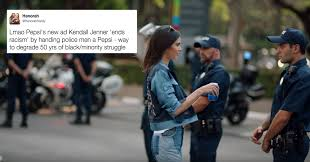Semiotics: blog tasks
Part 1: English by Tarun Thind analysis
1) What meanings are the audience encouraged to take about the two main characters from the opening of the film?
The young man we are initially introduced to seems extremely cautious, observant, and shy, while the other character seems more outgoing, rebellious, and disobedient.
2) How does the end of the film emphasize de Saussure’s belief that signs are polysemic – open to interpretation or more than one meaning?
The ending leaves the interaction between the boy and the man open to interpretation. Some may see it as a moment of connection or understanding, while others may focus on the cultural divide between individuals. This reflects de Saussure’s belief that signs (like their interaction) can have multiple meanings.
Part 2: Media Magazine theory drop - Semiotics
1) What did Ferdinand de Saussure suggest are the two parts that make up a sign?
The signifier (the form of the sign) and the signified (the concept it represents).
2) What does ‘polysemy’ mean?
It means that a sign can have multiple meanings or interpretations.
3) What does Barthes mean when he suggests signs can become ‘naturalised’?
He means that certain meanings become so widely accepted that they seem "natural" or obvious, even though they are culturally constructed.
4) What are Barthes’ 5 narrative codes?
Hermeneutic (Enigma): Poses a mystery or question.
Proairetic (Action): Drives the plot through events.
Semantic: Adds layers of meaning.
Symbolic: Uses symbols and contrasts.
Cultural: Relates to shared knowledge or beliefs.
5) How does the writer suggest Russian Doll (Netflix) uses narrative codes?
Russian Doll uses enigma codes to create mystery, action codes to advance the story, and symbolic codes to explore deeper meanings about life and death
Part 3: Icons, indexes and symbols
1) Find two examples for each: icon, index and symbol. Provide images or links.
Symbol:
2) Why are icons and indexes so important in media texts?
They convey meaning quickly and are often universally understood, making communication more efficient.
3) ) Why might global brands avoid symbols in advertising?
Symbols can have different meanings in different cultures, leading to misunderstandings or offense.
4) Find an example of a media text (e.g. advert) where the producer has accidentally communicated the wrong meaning using icons, indexes or symbols. Why did the media product fail? (This web feature on bad ads and marketing fails provides some compelling examples)
Pepsi’s 2017 ad with Kendall Jenner used symbols of protest but was criticized for trivializing serious social movements. The symbols didn’t resonate as intended, leading to backlash.
5) Find an example of a media text (e.g. advert) that successfully uses icons or indexes to create a message that can be easily understood across the world
McDonald's golden arches (icon) are recognized globally and immediately associated with the brand, making it an effective and universal marketing tool.








Comments
Post a Comment